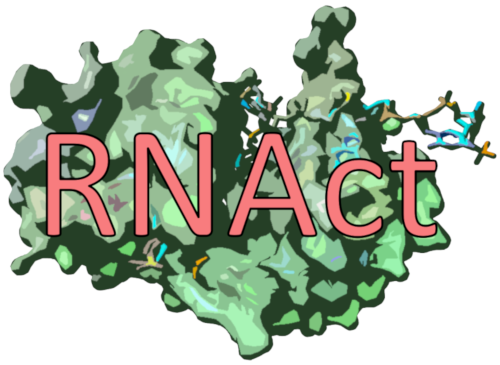Creation and characterisation of functional RRMs
Lead beneficiary: HMGU
Duration: Months 8–44
Involved ESRs: ESR3, ESR5, ESR6, ESR7, and ESR9
Objectives
Creating a complete and comprehensive database of available RRM information from the many available RRM data covering a broad range of behaviours
Enriching the RRM database with results from in silico methodologies
Computing binding energies based on RRM-RNA structures and models by molecular dynamics simulations
Determining the most suitable and critical positions for one or several RRMs for each ‘design cycle’
Creating RRMs certified to bind particular RNA fragments for synthetic biology and bio-analytics
Defining, understanding and predicting the determinants of RNA binding, with a particular focus on the interplay between the rigid elements and flexible loops of RRMs
Characterising the binding of single- and multi-domain model and newly computationally designed RRM with RNA at the atomic level.
Characterising the behaviour of RRM domains as influenced by RNA binding or small molecule binding
Representation and design of dynamic proteins
Lead beneficiary: CNRS
Duration: Months 8–44
Involved ESRs: ESR1, ESR2, ESR4, and ESR5
Objectives
Developing sequence-based methodology to characterize and generate RRM sequences, including their dynamics properties
Improving the protein structure representation for dynamic regions to connect this to the (biophysical) sequence space and existing protein design methodology
Improving RNA-RRM docking through fragment-based methods, with ssRNA conformational modelling included
Delivering computationally designed RRMs and related models of RRM-RNA complexes
Delivering an RRM protein design toolkit that covers sequence, biophysical space, and structure
Bio-analytics and synthetic biology
Lead beneficiary: CSIC
Duration: Months 8–44
Involved ESRs: ESR8, ESR9, and ESR10
Objectives
Developing synthetic circuits in bacteria based on post-transcriptional regulation
Measuring in vitro RRM-RNA interactions through RNA biochips
Designing novel RNA biochips that reflect the unique structure and sequence of RNA molecules
Understanding how RRMs can be allosterically modulated and determining the size and conformation of RRM-RNA complexes
Developing methods to monitor bacterial cell cultures to characterize the regulatory behaviour triggered by synthetic circuits
Developing analytical tools to characterize RNAs from intact (or lysed) cells
